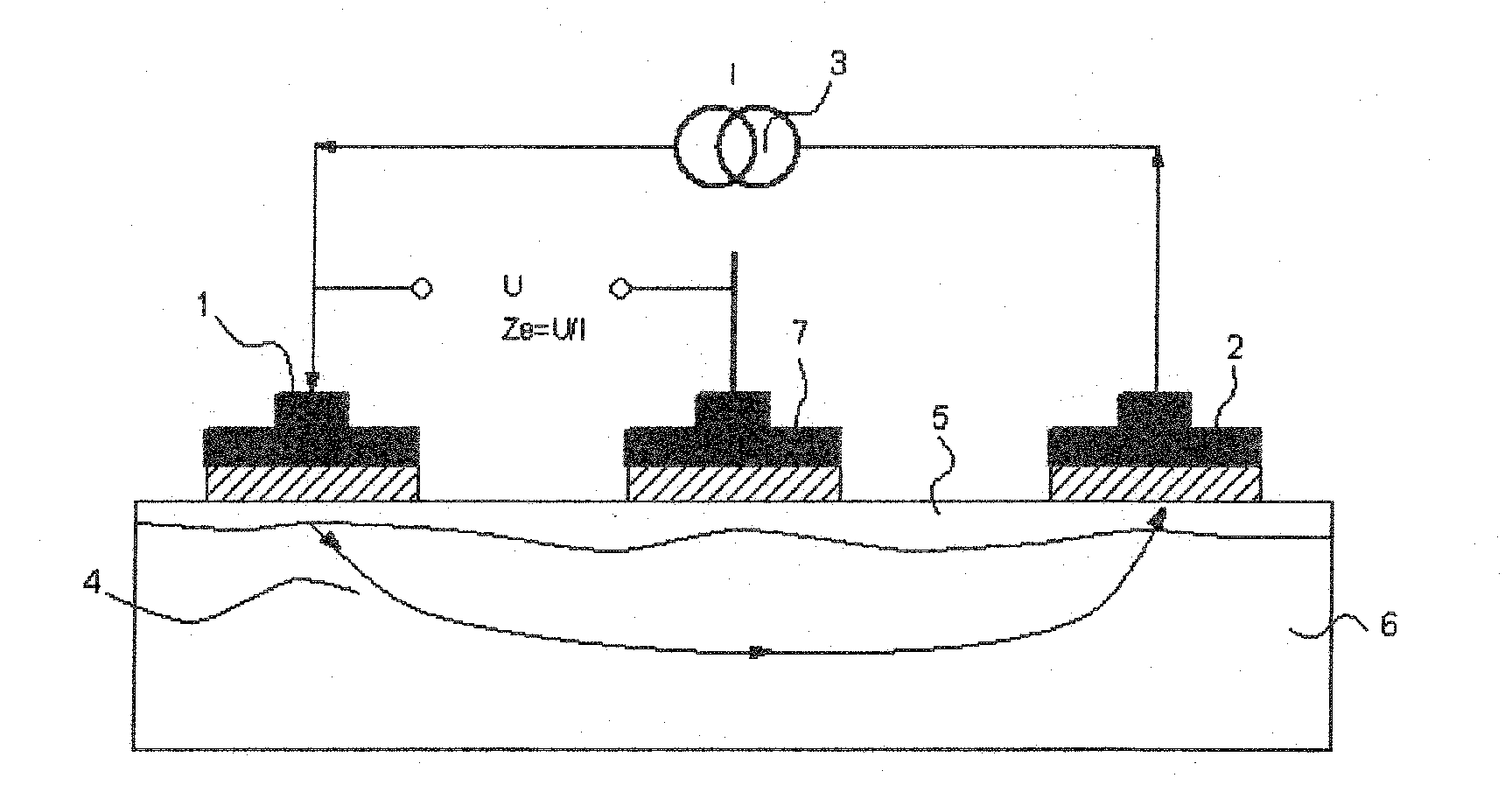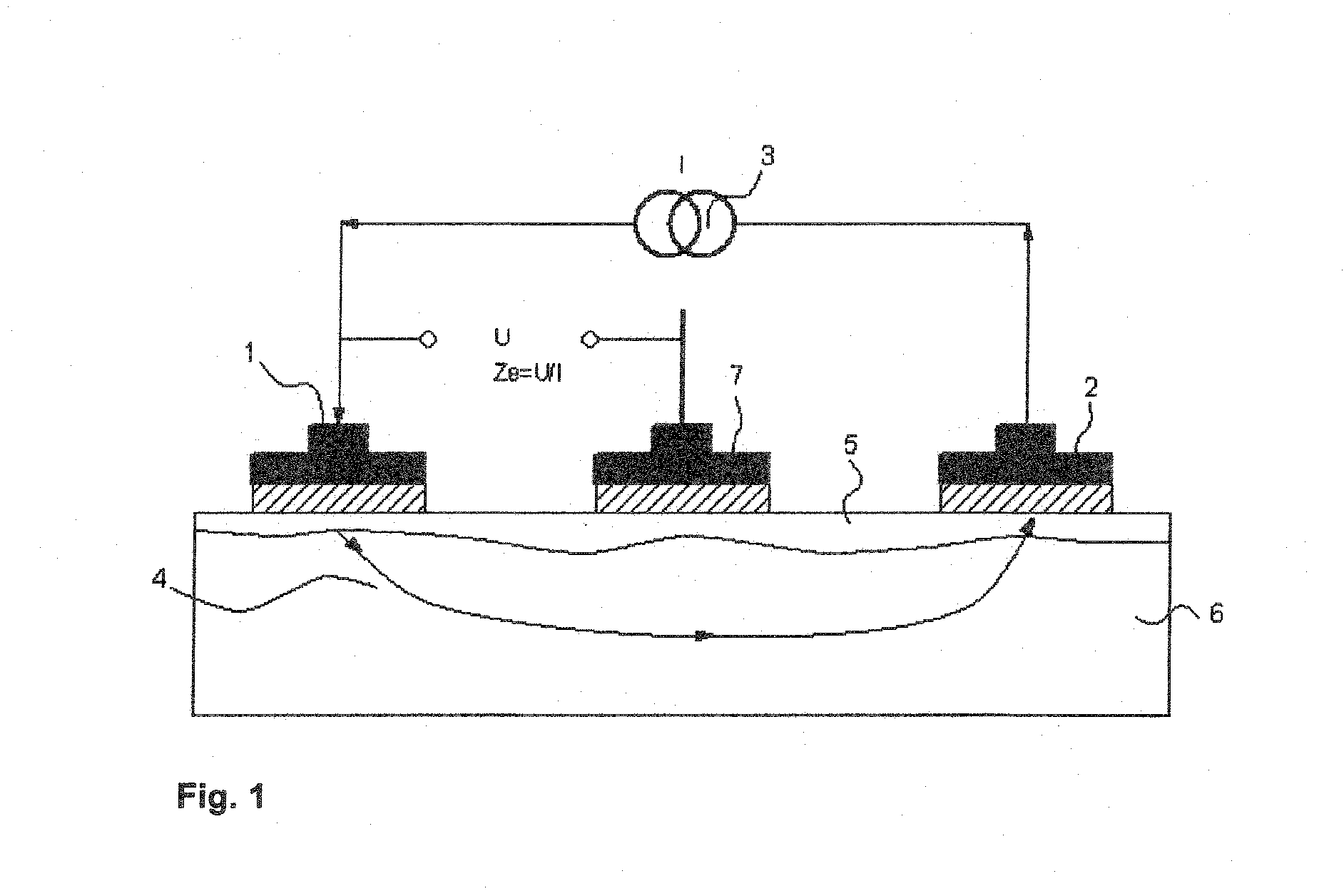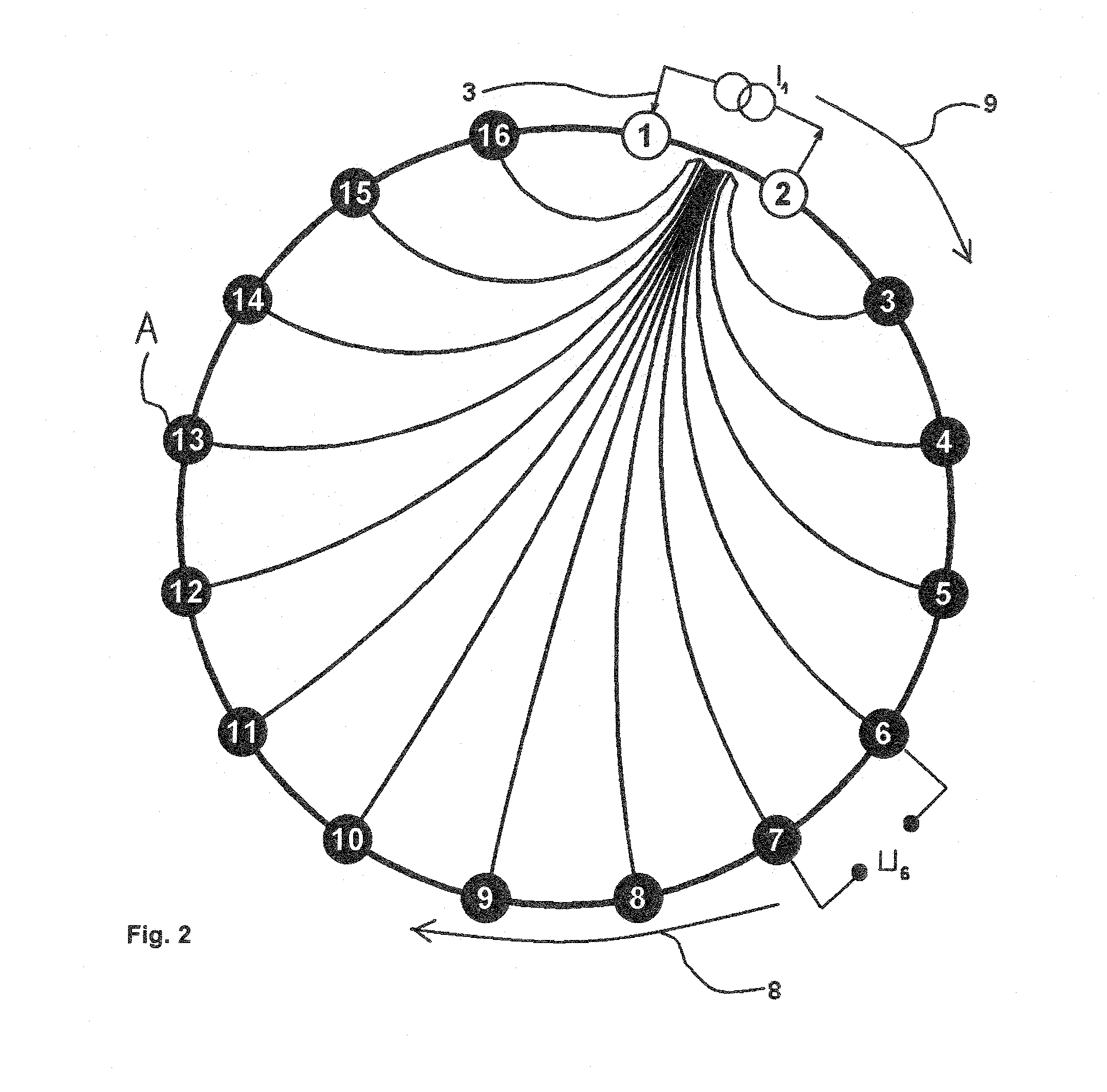Method for electroimpedance tomography
a tomography and electroimpedance technology, applied in the field of electroimpedance tomography, can solve the problems of inability to contact an electrode or a plurality of electrodes with the skin, and failure of current eit systems to deliver analyzable data in the disconnected cas
- Summary
- Abstract
- Description
- Claims
- Application Information
AI Technical Summary
Benefits of technology
Problems solved by technology
Method used
Image
Examples
Embodiment Construction
[0029]Referring to the drawings in particular, FIG. 1 schematically shows the principle of a three-point electrode-skin contact impedance measurement. The current I from a power source 3 is fed via two electrodes 1, 2. The current flows into the body 4 over an electrode 1 on the left and out again via an electrode 2 on the right. The body consists of upper skin layers 5 for contacting the electrodes 1, 2 and deeper skin and tissue layers 6. The voltage is measured from a current-carrying electrode against a currentless reference electrode. The main voltage drop at the current-carrying electrode 1 takes place at the transition to the interior of the body. The impedance is comparatively low in the body itself. The potential drop is measured against a currentless electrode 7, because there is no voltage drop here at the electrode-skin contact because I=0. The impedance Ze=U / I between the electrodes 1, 7 consequently represents essentially the electrode-skin contact transition impedance...
PUM
 Login to View More
Login to View More Abstract
Description
Claims
Application Information
 Login to View More
Login to View More - R&D
- Intellectual Property
- Life Sciences
- Materials
- Tech Scout
- Unparalleled Data Quality
- Higher Quality Content
- 60% Fewer Hallucinations
Browse by: Latest US Patents, China's latest patents, Technical Efficacy Thesaurus, Application Domain, Technology Topic, Popular Technical Reports.
© 2025 PatSnap. All rights reserved.Legal|Privacy policy|Modern Slavery Act Transparency Statement|Sitemap|About US| Contact US: help@patsnap.com



